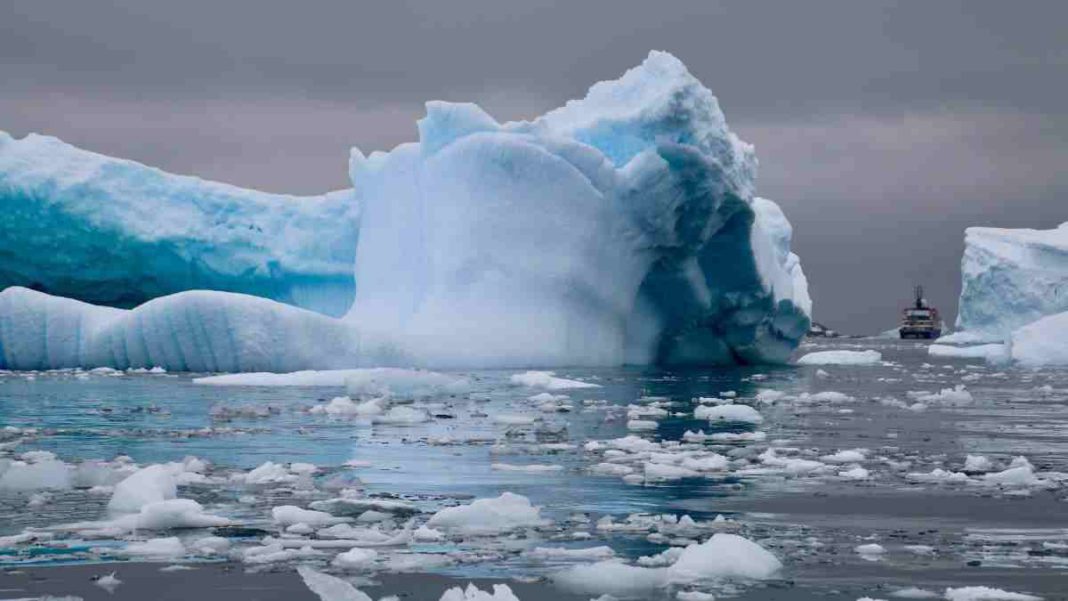ANTARCTICA: Scientists have discovered that Antarctica, the world’s southernmost continent, is in the grip of an alarming crisis as its ice shelves rapidly shrink with no signs of recovery. The western half of Antarctica, particularly vulnerable to warm water, has experienced rapid erosion of its ice shelves.
This concerning trend has been revealed through a comprehensive analysis of 100,000 satellite radar images, funded by ESA’s Earth Observation Science for Society program and published in the journal Science Advances.
The research, led by scientists from the University of Leeds, has revealed that a staggering 40 percent of Antarctica’s ice shelves have significantly reduced in volume over the past 25 years.
Ice shelves are crucial stabilizers for the region’s glaciers, acting as buttresses that slow down the flow of ice into the ocean. As these ice shelves diminish, the rate of ice loss from the ice sheet increases, posing a significant threat to global sea levels.
The study identified that 71 out of 162 ice shelves around Antarctica have decreased in volume, releasing an astonishing 67 trillion tonnes of meltwater into the ocean.
The worst affected, the Getz Ice Shelf, experienced one of the most significant losses, with 1.9 trillion tonnes of ice disappearing over the study period. Similarly, the Pine Island Ice Shelf lost 1.3 trillion tonnes, underscoring the severity of the crisis.
Dr. Benjamin Davison, a research fellow at the University of Leeds, expressed his concern, stating, “We expected most ice shelves to go through cycles of rapid but short-lived shrinking, then to regrow slowly. Instead, we see that almost half of them are shrinking with no sign of recovery.”
His colleague, Anna Hogg, further emphasized, “Many of the ice shelves have deteriorated significantly, with 48 losing more than 30% of their initial mass over just 25 years. This is clear evidence that Antarctica is changing due to global warming.”
Satellites have played a pivotal role in monitoring this remote polar region. Missions such as Europe’s Copernicus Sentinel-1 and ESA’s CryoSat have provided invaluable data, enabling scientists to measure changes in ice height and calculate variations in actual ice volume.
Noel Gourmelen from the University of Edinburgh and Earthwave highlighted the importance of ESA’s CryoSat, stating, “ESA’s CryoSat has also been an incredible tool for monitoring the polar environment.”
This alarming research underscores the urgent need for immediate global action to mitigate the impacts of climate change. As Antarctica’s ice shelves continue to shrink, the potential consequences for global sea levels and ocean circulation patterns could be catastrophic.
Urgent and decisive measures are essential to safeguarding the delicate balance of our planet’s climate and preserving the stability of our oceans.
Also Read: Ozone Hole over Antarctica Reaches Record Size, Potentially Linked to Tonga Volcano Eruption



